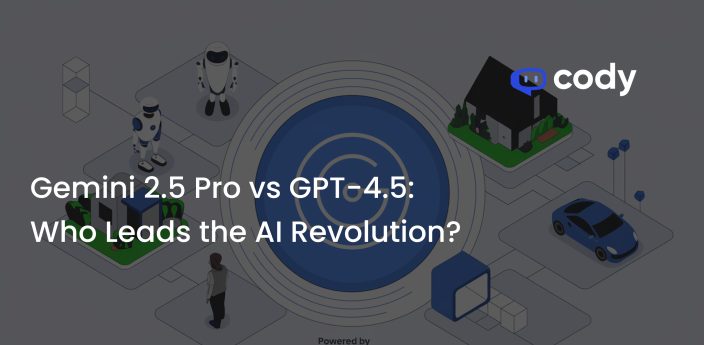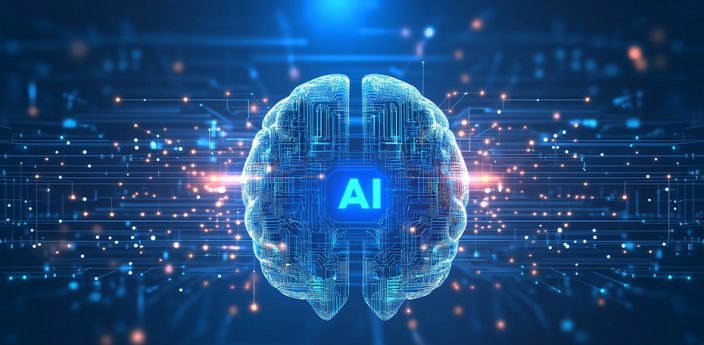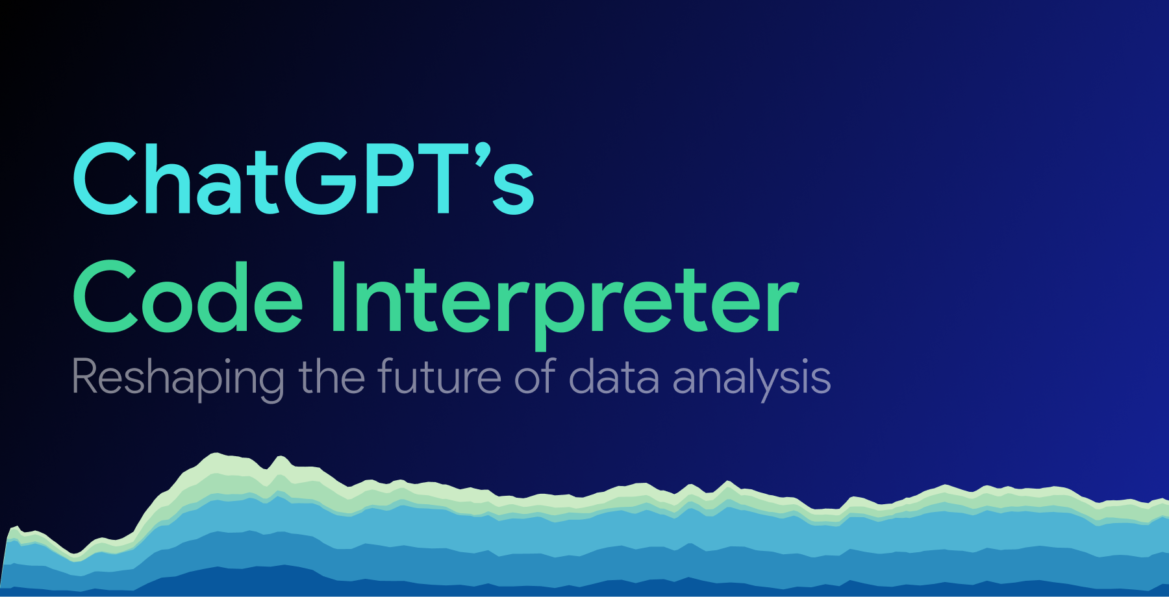
Will ChatGPT’s Code Interpreter Replace Data Analysts?
Discussing the Code Interpreter’s impact on Data Analysis
A couple of weeks ago, OpenAI released the Code Interpreter feature for its ChatGPT Plus subscribers, and it created waves in the tech community. If you are someone from the tech community who is still unaware of what the Code Interpreter is and the potential it holds, you have come to the right place. We gave the Code Interpreter a try, and in this article, we will be discussing the Code Interpreter’s impact on Data Analysts and whether it is actually going to replace Data Analysts completely.
Table of contents
- What is the Code Interpreter?
- How to activate the Code Interpreter?
- Using the Code Interpreter for Data Analysis
- Will the Code Interpreter replace Data Analysts?
What is the Code Interpreter?
When OpenAI launched the Code Interpreter feature for ChatGPT, we had written an article about what it is and how it functions. You can check out that article over here. To explain what the Code Interpreter is in brief — it is a python sandbox that runs code generated by ChatGPT and provides you with the final output. The code execution is done recursively, and the context is persisted almost throughout the chat. Recursive execution means that the output of the code is fed back into the sandbox until a satisfactory response is generated. This also applies to debugging the code.
You can also upload files such as code, documents, images, and datasets. There have been instances where the context may be lost due to the context window or live container migration at the backend. In such cases, you may need to reupload the file, and the Code Interpreter will handle the rest.
How to activate the Code Interpreter?
To activate the Code Interpreter for ChatGPT, you need to subscribe to ChatGPT Plus. After subscribing, click on the three dots and go to Settings & Beta > Beta Features. Enable Code Interpreter.


Create a new chat and select GPT-4 with Code Interpreter.
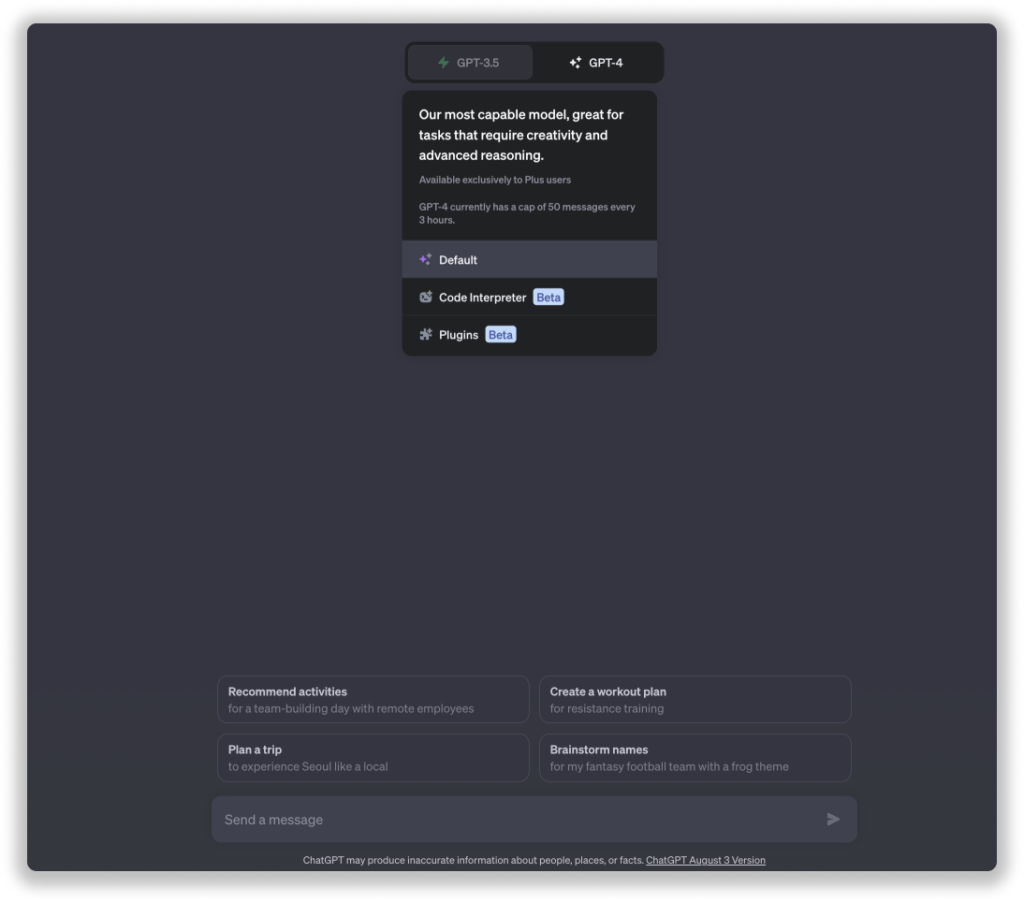
Using the Code Interpreter for Data Analysis
To illustrate and display the potential of the Code Interpreter, we will be exploring the Data Analysis domain since it encompasses multiple aspects of programming above and beyond generating the code. An accurate data analysis requires a good understanding of the data and its attributes. Getting started with data analysis using the code interpreter is as simple as uploading your dataset and querying the dataset in natural language.
Here are a few use-cases that we have found where the code interpreter shines and can supercharge your data analysis workflow:
Data Cleaning
As important as this phase of data analysis is, it can get quite tedious, especially if you are a beginner and have just started your data analysis/data science journey. The Code Interpreter makes the entire process efficient and will help you save a lot of time browsing through and understanding the dataset. Well, this does not imply that there is no need for human intervention, as LLMs tend to hallucinate frequently. It is necessary that you always keep the entire process in check.
The Code Interpreter can help you in various Data Cleaning methods such as:
- Understanding your dataset

- Handling missing/invalid values

- Checking for incorrect data-types and suggesting solutions for rectifying them
Learning about Data Analysis methodologies
Data Analysis is still one of the most trending jobs currently as an entry-point into the tech industry, and many people are preparing to get into this field. There are a variety of different courses available online that one can take to become a data analyst. However, one cannot gain expertise in data analysis or data science just by doing a dozen of courses. You need to be hands-on and keep analyzing/experimenting with a wide spectrum of datasets, and sometimes make your own datasets.
The logical reasoning of GPT-4, in harmony with the live execution of code using the code interpreter, makes ChatGPT nothing short of acting as your mentor in understanding the myriad of terminologies in data analysis. The best way to learn any skill is by asking questions and ChatGPT enables you to do the same. Having some level of interactivity always improves your learning capabilities and helps in understanding that particular domain inside-out.

Exploring different solutions
Keeping aside the basic framework of data analysis, there isn’t a checklist defined that one can follow to find inference from the dataset. Data analysis and programming is a form of art. Art differs for each individual and can only be improved when you have explored other arts. With ChatGPT you can access different solutions with justifications that you may not have even thought of. With the addition of the Code Interpreter, ChatGPT has now additional context to work on, which improves the solutions drastically.

Data visualization
This is hands down one of the best features of Code Interpreter (or ChatGPT Plus) currently — the ability to display visualizations and images. Visualizing your dataset makes the overall process of understanding the attributes a lot quicker. Extending our previous use-case of listing out the different methods to find outliers, we can graphically illustrate the same using box-plots and histograms.
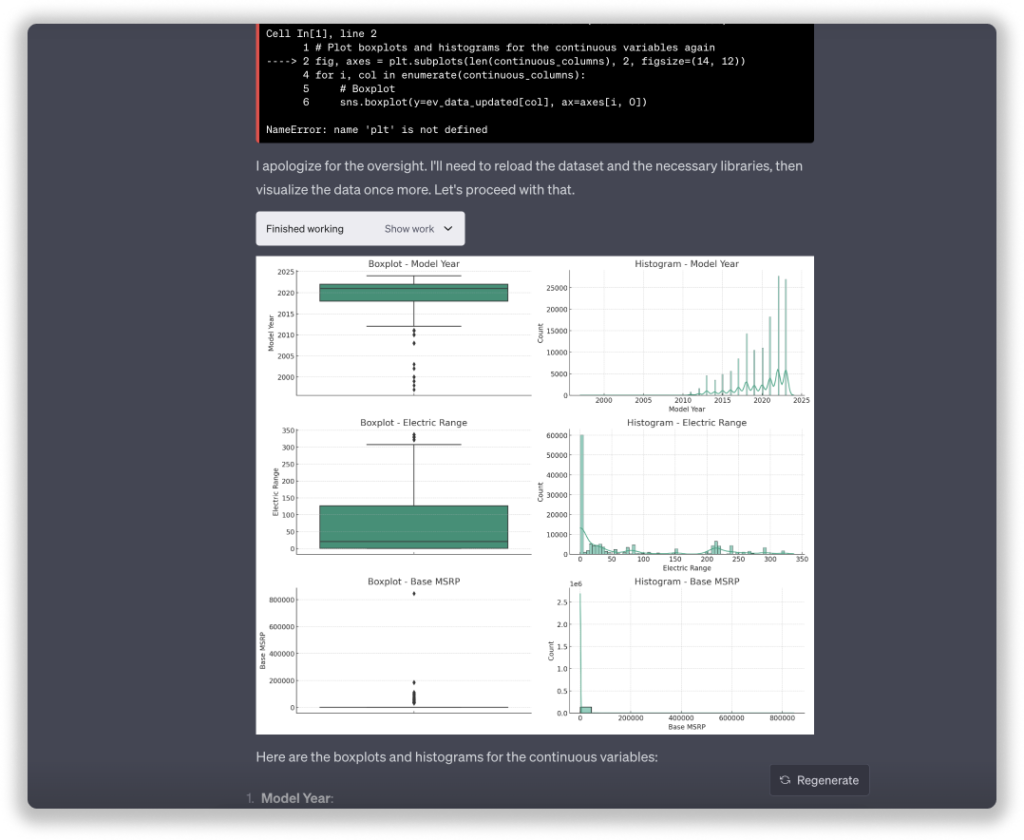
In the screenshot above, you can also see that the Code Interpreter self-debugged the error and generated the visualization for the outliers.
Understanding existing code
Reading through code can consume a lot of time especially when there is a lack of comments or the comments are insufficient. Using the Code Interpreter, you can simply upload the python or jupyter notebook file and ask ChatGPT to summarize the Code for you. You can also ask questions about the code. Although this was possible previously, it wasn’t as seamless and also had context limitations. This use-case can turn out to be really useful during training or collaboration.

Will the Code Interpreter replace Data Analysts?
This is just the beginning of AI-based tools, and they will continue to improve with additional features and larger context-windows. The AI revolution is likely to replace many jobs, but it will also create twice as many jobs that we may not have even imagined yet. Tools like the Code Interpreter will handle tedious and redundant tasks, enabling Data Analysts to focus more on improving data quality and making more informed decisions. Additionally, ChatGPT will assist in enhancing the skills of existing Data Analysts and help them advance in their careers.
“AI won’t replace you. A person using AI will.”
In this AI era, it is crucial for businesses to have well-trained employees, and incorporating AI for employee training can be a significant investment. If you are seeking AI solutions to train your employees, Cody is the right tool for you. Similar to ChatGPT, Cody can be trained on your business data, team, processes, and clients, using your unique knowledge base.
With Cody, businesses can harness the power of AI to create a personalized and intelligent assistant that caters specifically to their needs, making it a promising addition to the world of AI-driven business solutions.
Subscribe to ChatGPT Plus and get access to the Code Interpreter along with a host of additional featured. Link to the Code Interpreter chat.


